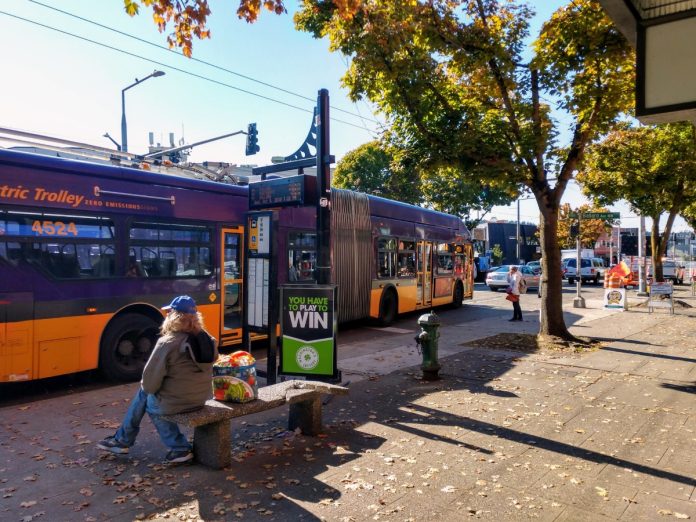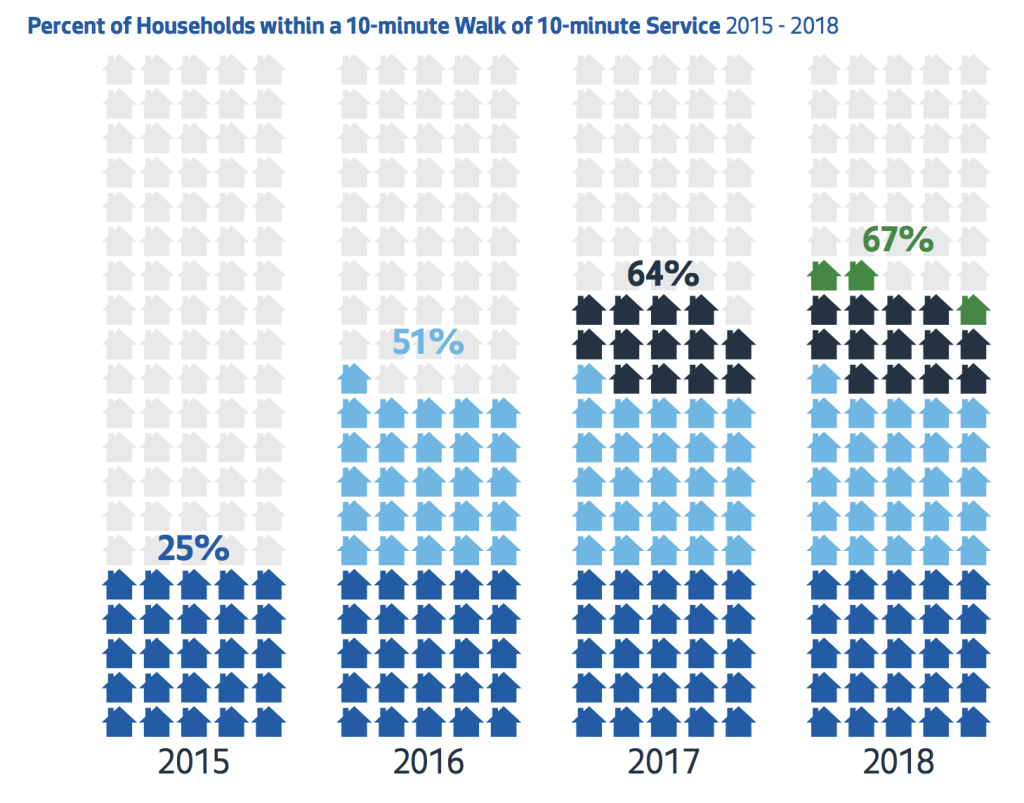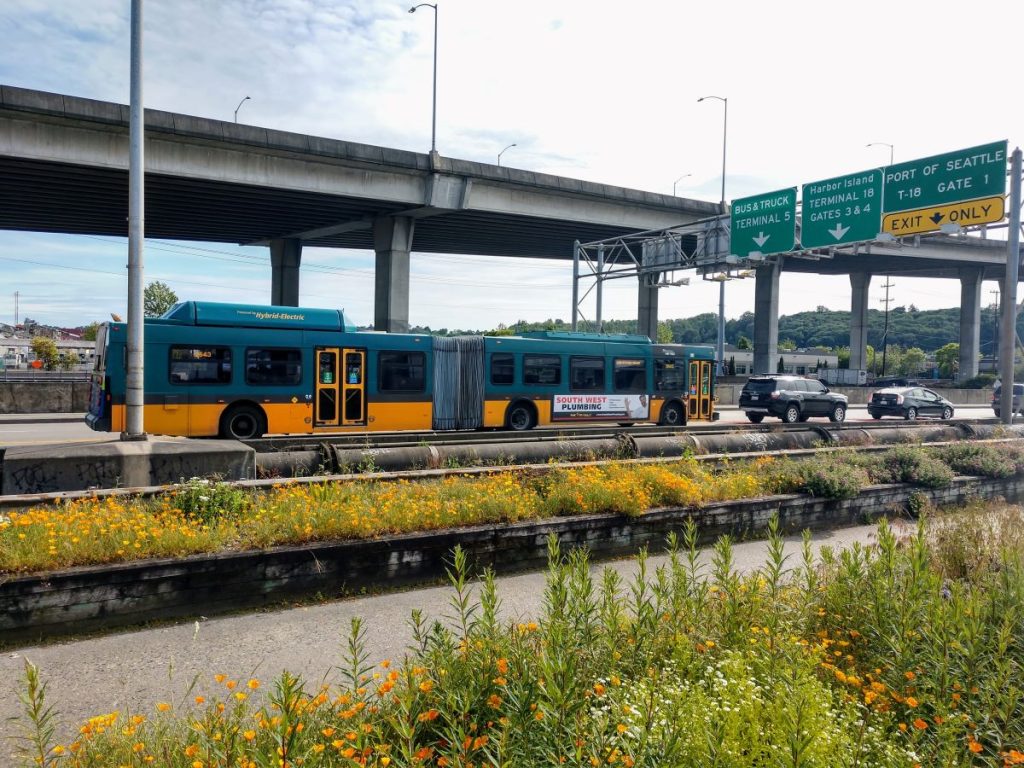
Transportation funding is in serious peril due to a perfect storm, but there could be help on the horizon. The storm started in November when Initiative 976 (I-976) passed triggering car tab funding cuts unless the Washington Supreme Court steps in to invalidate them permanently this fall. The Covid-19 pandemic hit in March, which slowed sales tax and fare collections and took all the wind out of the sails of an effort to renew the Seattle Transportation Benefit District (STBD) at a King County-wide level.
With the County shelving their plan, the City of Seattle was left with a benefit district set to expire at the end of 2020 and no plan to replace it. Expiration would be a blow in good times financially, but in bad times it could be devastating.
The STBD is responsible for 15% of King County Metro’s overall service, greatly increasing bus frequency and reach in Seattle. Some of Seattle’s busiest routes see a 30% boost thanks to the STBD voters approved in 2014. In fact, Seattle went from 25% of households within a 10-minute walk of frequent bus service (10-minute headways at peak periods) in 2015 (the first year the STBD went into effect) to 70% of households last year, nearly tripling frequent transit access.
During the Council Briefing on Monday, Councilmember Alex Pedersen, who is transportation chair, said he will be advancing legislation to renew the STBD.
“We’ll have more information at the end of this week,” Pedersen said. “The main point is that it’s expiring, and that in my opinion, and I know in many others’, we believe it should be renewed and specifically put on the ballot in November for voters to consider for renewal. As we know, transit is the vital backbone of our regional transportation system even today for essential workers and it will for all workers as our economy reopens. Transit is also a key solution for addressing climate change, and we have substantial needs with our City bridge, including of course the West Seattle Bridge.”
Early indications are that Councilmember Pedersen has a very different package in mind, with funding thinner and spread wider so citywide bus service will get less of a boost. Due to the West Seattle Bridge closure, special attention is directed toward transit service in West Seattle, with perhaps $6 million of a roughly $30 million package set aside for it per year. (Some of this funding could also be well spent upgrading bike routes if ballot language permits it.) That funding would net about 40,000 annual service hours for the peninsula during the first four years. Meanwhile, an early draft had $7 million per year directed toward citywide bus service in the first four years. That would provide a 50,000 annual service hour boost to the “15-minute frequency” network.

The existing benefit district relies on a $60 car tab fee and 0.1% sales tax. The uncertainty and possible legal hurdle caused by I-976 steered the City away from using car tabs this time around instead simply renewing the sales tax at the same rate, which means the Seattle Department of Transportation (SDOT) will have about have as much STBD money to work with.
It appears that a larger citywide transit boost is planned in the fifth and sixth years of the six-year plan as sales tax revenue are expected to rebound to higher levels and there are hopes the West Seattle Bridge will be repaired by then, removing the need for the special set aside for Seattle’s southwest peninsula. SDOT’s preliminary numbers suggest a boost of approximately 100,000 annual service hours in those final two years. This is far cry from a service boost that has exceeded 300,000 annual service hours during some years of the existing STBD.

The other funding priorities proposed in the renewal also appear worthwhile, with the fare-free Youth ORCA program and low-income transit access both highlighted so far. The Downtown Circulator shuttle service has also been earmarked and lumped in with low-income transit service bucket, although it appears a high-cost-per-ride service primarily targeted at tourists. Finally $5 million per year could be set aside for capital investments such as transit spot improvements–although pothole repairs more broadly and adaptive signals may also fit the bill under this line-item–unless the ballot language is tightly constructed. Again, those breakdowns are preliminary and subject to change since the proposal isn’t officially released yet.
The appetite to further raise the sales tax amidst a pandemic appears low, but maintaining the 0.1% sale tax we already have seems doable. The lack of car tab revenue means we will need to spend our benefit district funding wisely to stretch it as far as it can go. As Transportation Chair Pedersen reveals the details of his plan later this week, we’ll need to be on the lookout to make sure that it does.
Doug Trumm is publisher of The Urbanist. An Urbanist writer since 2015, he dreams of pedestrian streets, bus lanes, and a mass-timber building spree to end our housing crisis. He graduated from the Evans School of Public Policy and Governance at the University of Washington in 2019. He lives in Seattle's Fremont neighborhood and loves to explore the city by foot and by bike.

